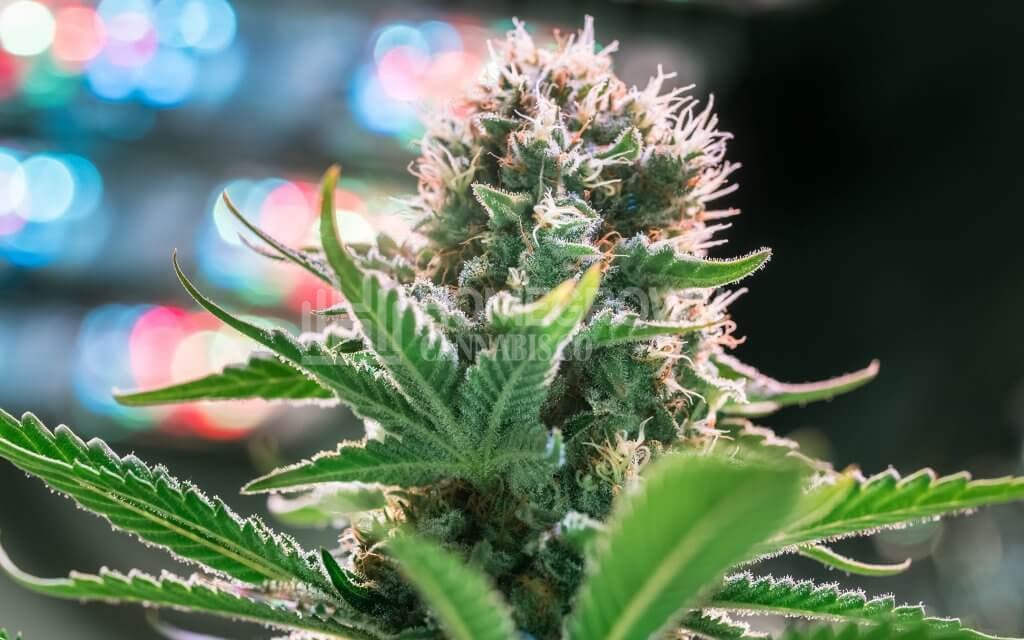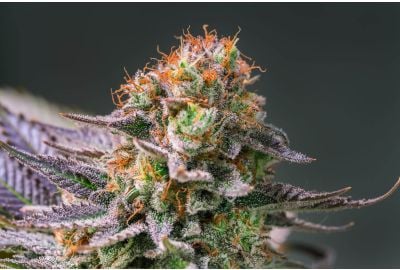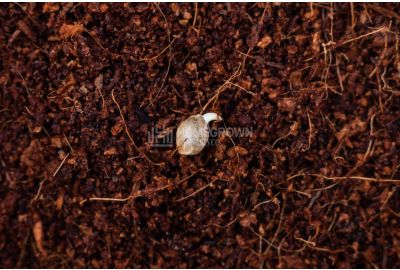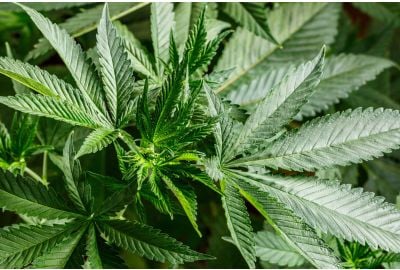Find Out Why Your Cannabis Is Not Flowering
Cannabis not flowering is an issue that a few growers may encounter at some point. Home cultivation is an exciting, rewarding journey, but many factors go into successful harvests. Don’t worry if you encounter problems; most are easily fixable.
There may be several reasons your crop isn’t blooming, from light leaks to inconsistent feeding. Join us as we explore the cannabis growth cycle and how to start flowering cannabis. We also cover how to identify and prevent potential issues.
Ready to boost your knowledge? Let’s jump in.

When do cannabis plants start flowering?
Cannabis plants begin flowering when they experience a daily, uninterrupted 12 hours of complete darkness. Understanding autoflower vs. photoperiod strains is also essential, so you know when they should start blooming.
Photoperiod strains won’t start blooming until you switch their lighting from an 18/6 cycle to a 12/12 one.
Plants from auto seeds differ from photoperiods. Autoflowering variants bloom regardless of the light schedule once they sufficiently establish themselves with a few weeks of vegetative growth.
Give autoflowers enough food, keep them well-lit, and they’ll take care of the rest, flowering when ready.
Knowing how to make marijuana plants bud also entails understanding the anatomy of the plants. They develop their branches, nodes, stalks, and fan leaves during vegetation. They only produce buds when they enter their blooming phase.
Marijuana is a short-day plant, because it relies on reduced daylight hours to start flowering. It begins stretching more significantly, forming pre-flowers, and developing tiny white hairs known as pistils.
Providing the correct amount of darkness for photoperiod strains is vital for flowering. The process won’t happen overnight, so be patient, and don’t panic if your crop doesn’t start blooming immediately.

Why your cannabis is not flowering: 5 reasons and what to do
There are a few reasons why your cannabis plants might not reach the flowering stage. Let’s explore them below.
Plants need more time
Your cannabis plants may need more time, as each growth stage is a process. Cannabis plants typically take 3–8 months to reach harvest. Understanding the length of each growth phase is essential for inducing flowering.
It’s possible to transition your crop into a flowering state from a very young age. Use a Sea of Green (SOG) setup by bunching several plants closely together. It shortens the vegetation phase, maximizes available space, and boosts yields.
Though bypassing the vegetative stage is possible, a larger, well-developed plant provides better yields.
The plants spend around 2–3 weeks as seedlings after 3–10 days in germination. The vegetative stage lasts 3–16 weeks. Flowering usually lasts 8–11 weeks. Some strains bloom quicker, while others could take longer.
Autoflowers start blooming 3–5 weeks after germination and spend a few weeks in flowering, depending on the strain. They’re typically ready for harvest much sooner than photoperiod strains.
Feminized and regular cannabis seeds have normal lighting requirements as they’re photoperiod. Remove males from the latter crop as soon as you identify them, unless you plan to breed.
Outdoor plants usually take longer to mature than inside crops. There may be advantages to cultivating outside, but achieving the same results indoors is possible because you control environmental factors.
Maintain a consistent nutrition and lighting schedule. Don’t change the photoperiod once you’ve switched to a 12/12 cycle if you have a weed plant not flowering.
Light leaks
Indoor growers must ensure no light enters their grow room or tent during the plants’ overnight growth.
Even a tiny sliver of illumination can confuse the plants and lead to delayed or failed flowering. It could also cause some crops to become hermaphrodites.
Check for light leaks before starting cultivation by going into your grow area at night and searching for extra illumination. Seal any cracks or holes you find so that it’s pitch black when the lights are off.
Incorrect photoperiod
Consistency is crucial when flowering marijuana plants. Missing the window for turning on or off your grow lights by even a half-hour throws off the plants.
A continued lack of consistency in lighting may cause hermaphroditism. This phenomenon is where female plants develop male pollen sacs and can pollinate themselves and other females. Buds still form, but they contain more seeds.
Hermaphrodite plants divert more energy to seed production, so the overall yield will decrease.
Cannabis plants not flowering may also happen if you didn’t switch to a 12/12 light cycle or changed it at the wrong time.
Invest in a high-quality timer setup to control the photoperiod and avoid interrupting the plants at night. Only use green light if you absolutely must do something during their dark period.
You are growing a male plant
If you encounter a marijuana plant that doesn’t flower, it may be a male. Unlike females, they don’t produce buds. They form pollen sacs around the node sites to prepare for pollination. Buy feminized seeds to grow a female-only crop 99% of the time.
Unsuitable climate
Cannabis plants require specific climates to grow successfully. They may not flower if exposed to cold, dark, or harsh conditions. Ensure you live in an optimal environment if you plan to cultivate outdoor crops or keep them inside, where you can control the factors.
Incorrect N-P-K ratio
The correct nutrients are vital factors for flowering cannabis plants. Ensure you provide them with an ideal ratio of N-P-K: nitrogen, phosphorus, and potassium. Many nutrient packs have different formulations that are specific for the growing and blooming stages.
During flowering, cannabis plants need more phosphorus to help promote large buds, and potassium to increase flower size.
While nitrogen is vital during vegetation, you should decrease it during flowering. Too much can prevent blooming and create an unpleasant taste in your buds.
An ideal N-P-K ratio for early flowering is 1:3:3, and 0:3:3 for late blooming. The plants shouldn’t receive any nitrogen during the last three weeks of flowering.
How to make marijuana plants flower?
To induce blooming, you need to mimic the natural conditions that outdoor plants experience. Knowing when to switch from veg to flower depends on where you’re growing.
Outdoor crops need enough time to grow but must finish before winter. For most strains grown in the Northern Hemisphere, harvest time comes around September or October.
Growing outside may result in cannabis plants not flowering if there are additional light sources overnight. Provide your plants with 12 hours of pure darkness daily.
If growing indoors, ensure there are no light leaks in your grow room or tent and maintain a strict, consistent lighting schedule.
Autoflowers begin blooming after a few weeks of vegetative growth. Photoperiod management isn’t required, but remember to supply them with the correct environment, nutrients, and water.
Here are some extra tips on how to start flowering cannabis:
- If you’re concerned about additional illumination overnight, move your cannabis plants into a dark garage, cellar, or shed. Alternatively, place a light-proof tarp over them when the sun sets.
- Ensure your marijuana crop receives sufficient air circulation to promote healthy growth and flowering.
- Install timers for your lights if cultivating indoors. Alternatively, set up an automatic system that switches the globes off or on at specific times.
- Maintain a consistent temperature of 70–82°F when the lights are on during vegetation. Ensure the lamps naturally drop to 60–75°F when the lamps are off. Flowering plants prefer cooler environments than vegging crops.
- Ensure vegetative humidity levels also remain consistent. Keep them at 50–70% and drop them by 5% weekly.
- Maintain the correct temperature and humidity during vegetation. It’s vital to ensure your plants are happy and healthy in stable conditions when you trigger the flowering stage.
- During the blooming phase, switch the temperature to 65–80°F with lights on and 60–75°F when they’re off. Relative humidity (RH) should be 40–50%.

Master the art of cannabis flowering
Cannabis cultivation requires time, patience, and care. By understanding how flowering works and how to induce it, growing regular, autoflower, or feminized seeds becomes easier.
Remember that the lighting cycle is essential when learning how to make a weed plant bud. Unless you’re growing autos, you should switch to a 12/12 schedule to induce flowering.
Are you ready to master the art of flowering cannabis? Buy cannabis seeds from our store and browse our site for more helpful resources.
FAQs
If you have burning questions about flowering cannabis plants, check out the most common queries and answers below.
What do I do if my autoflower isn’t budding after 8 weeks?
Every strain is different; some may take longer to start budding than others. Be patient and wait another two weeks at least. If you still encounter the weed plant not flowering, try forced blooming. Expose it to complete darkness for a day, followed by a 12/12 lighting cycle.
When should I switch photoperiod strains to a 12/12 light cycle?
It depends on the strain. The general rule is to switch photoperiods to a 12/12 light cycle after 6–8 weeks of vegging. Research the plant’s growth characteristics and change the lighting schedule when it reaches around 50% of its predicted height.
What nutrient deficiencies can cause delayed flowering?
You may encounter cannabis not flowering if the plants don’t receive consistent N-P-K nutrients: nitrogen, phosphorus, and potassium. A calcium, iron, or phosphorus deficiency can also cause late or failed blooming.
Do flowering stimulants help induce budding?
No, flowering stimulants or boosters are for the flowering stage only. We don’t recommend using them before your plants start producing buds; they won’t help induce budding.
It’s possible to help encourage flower production by providing a mild dose of phosphorus and potassium during early flowering. Remember to expose your crop to complete darkness for 12 hours to induce budding.


